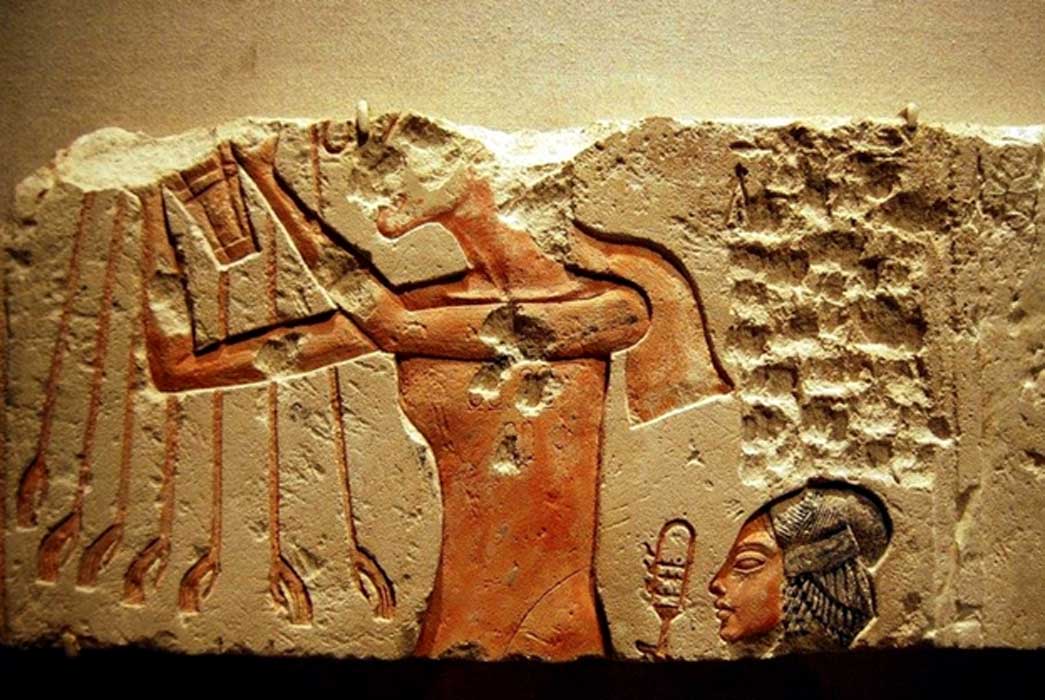
Was Meritaten the Ephemeral Ankhkheperure? Death of Nefertiti and Succession Games in the Royal Court – Part II
Given the virtual lack of royal males who were old enough to rule, disarray over who would assume the throne after Akhenaten’s death seems to have plagued the Amarna family. Having accorded exceptional status to the women in his life, the Heretic had probably paved the way for one of them to assume control of Egypt in the years ahead. Did Nefertiti enjoy a period of co-regency with her husband; and did she later marry her eldest daughter symbolically to become sole pharaoh, before passing the throne onto her? Almost any of these scenarios could have been possible.

A fragment of a limestone column from the Great Palace at Amarna shows Nefertiti and her eldest daughter Meritaten adoring the Aten. The Queen wears the twin feathers of Shu and the ram’s horns upon her head. It is possible that Meritaten followed in her mother’s footsteps to become pharaoh. Ashmolean Museum, Oxford.





